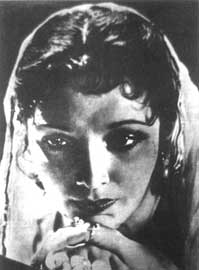THE LAST REPRESENTATIVE
OF THE GREAT FAMILY
|
The grains sowed by George Roerich in Russia, even though still invisible, were gradually bearing fruit. The Agni Yoga books were still prohibited, but they were being spread through manuscripts and copies. The interest of people to the “sown grains” grew quickly in the middle of the 1980s. At first, there appeared articles in magazines, and then later, books about the Roerichs.
From 1990 the books of the Living Ethics, the literary works of Nicholas Roerich, and the Letters of Helena Roerich were also being published. Like an avalanche, interest in the Roerich family was building rapidly. Soon travel from Russia became possible, and from there a strongly connected thread was created with the last member of the great Roerich family. Many people from Russia visited Svetoslav Roerich in Bangalore.
After the passing of his brother, Svetoslav Roerich, exhibiting inexhaustible energy, continued his creative and social work, and cultivated his skill as an artist. As an artist, Svetoslav Roerich worked in different genres, but was probably most successful as a portrait painter. He possessed an astonishing capability to reflect the inner, spiritual world of people on his canvas. The artist painted many beautiful portraits, but the best ones are the several portraits of his father, the portrait of Jawaharlal Nehru (painted in Kullu), and two wonderful portraits of Helena Roerich — one of which was created on the Instructions of the Great Teacher.
Svetoslav Roerich focused his social activity on the furthering of friendship and cooperation between different countries, especially between Russia and India. To achieve this he traveled a great deal, meeting and communicating both with statesmen as well as with ordinary people. He answered numerous questions, narrated about his parents and his elder brother.
Svetoslav repeatedly visited the Soviet Union. Each time his arrival in Moscow drew people from many cities in Russia. Not a single building had enough room for all who wanted to attend such a meeting.
In the summer of 1989, he proposed to Mikhail S. Gorbachev (the ex-president of Russia) the creation of a Nicholas Roerich Center & Museum in Moscow, as well as a Soviet Roerich Foundation. The next year his proposal was accepted, and Svetoslav Roerich, in accordance with his father’s behest, gave to Russia the remaining paintings and family archives, including the unique and invaluable manuscripts of his mother.
Before leaving his earthly life, Svetoslav Roerich created, in India, the International Memorial Roerich Trust. According to his plan, the country estate and the premises of the Urusvati Institute in Kullu, which belonged to his family, as well as the country estate of Svetoslav’s in Bangalore and his personal heritage, would be used for the welfare of mankind.
He dreamt about the resumption of work of the Urusvati Institute, where a real evolutionary center could be developed, and where scientists from all over the world could come and work. He carried on negotiations concerning these questions with the governments of Bulgaria, India and Russia. This task is still to be accomplished, and it should be done as a sign of gratitude to this wonderful family who toiled for the Common Good.
Svetoslav Roerich, the last representative of the Roerich family, went to the Supermundane World on December 30, 1993, at the age of eighty-eight. His wife, Devika Rani-Roerich, soon left this world as well. Svetoslav’s behest to us is “Let us always strive toward Beauty!”
All the members of this great family — the messengers of the Great Teacher — left the earthly plane, but not our planet. And today, together with the Great Teachers, they continue their selfless labor as they did during their earthly life, but in the World of Light.
The closest disciple of the Roerichs’, Boris N. Abramov, was in permanent contact with the Great Teacher and his Messengers — who in the earthly world we called Nicholas and Helena Roerich — till his passing in 1972. The records of these conversations are accessible now (unfortunately, only in the Russian language), and they have been published in a series of books called “Facets of Agni Yoga.”

